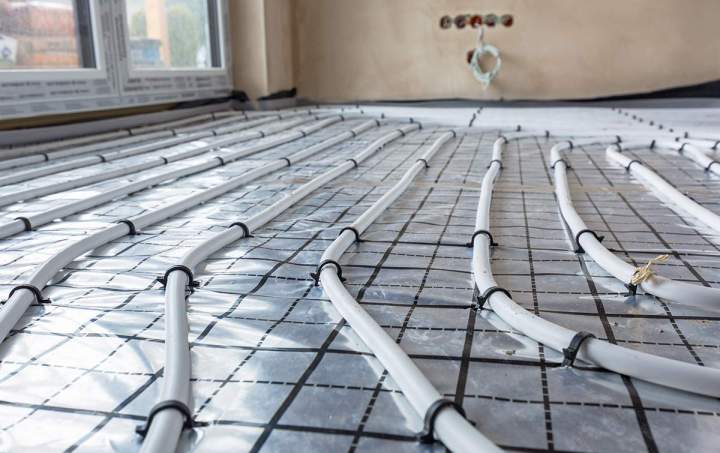What are the advantages of a water radiant floor?
Floor Microclimat / August 14, 2025

1. Optimal thermal comfort
Radiant floors provide gentle, even, and pleasant warmth. Unlike traditional radiators, which primarily heat the air above, this system heats the floor, creating an immediate feeling of well-being, especially on cold mornings. It's also quiet, eliminating airflow or pipe noise, contributing to a peaceful atmosphere in your home.
2. Energy savings
Operating at low temperatures (around 40°C), radiant floors are more energy efficient than traditional systems. They help maintain a comfortable room temperature while reducing energy consumption. By slightly adjusting the room temperature, significant savings can be made on heating bills.
3. Improving air quality
As a radiant heating system, radiant floor heating does not stir the air, meaning it does not stir up dust or allergens. This creates a healthier indoor environment, particularly beneficial for people with allergies or respiratory problems.
4. Space saving and aesthetics
The absence of wall radiators frees up floor and wall space, providing more freedom for room design and decoration. This system is discreet and blends harmoniously into the architecture of the home.
5. Compatibility with renewable energies
Radiant floor heating can be powered by a variety of energy sources, including heat pumps, condensing boilers, or solar thermal systems. This flexibility allows you to choose an energy solution that suits your needs and reduce your home's carbon footprint.
6. Durability and low maintenance
With proper installation, a hot water radiant floor can last for decades. It requires little maintenance, making it a reliable and durable long-term heating solution.
In short, hot water radiant floor heating combines comfort, energy savings, air quality, space savings, compatibility with renewable energy, and sustainability. It's a modern and efficient heating option, suitable for various types of homes. If you're considering installing it, it's recommended to consult a professional to assess the feasibility and costs associated with your project.